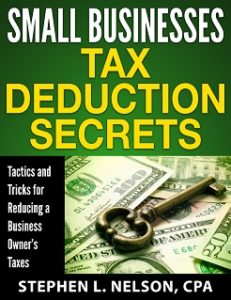In an online forum recently, I saw someone suggest you can accumulate a $10,000,000 Individual Retirement Account or 401(k) account.
This is clearly incorrect. But the statement got me wondering about a couple of things.
First, what is the realistic maximum one can accumulate in common retirement savings vehicles like IRAs, Simple-IRAs and 401(k) plans. And, second, how crazy a scenario do you need to produce a $10,000,000 result.
So I’m going to poke around both questions here.
Maximum Possible IRA, Simple-IRA and 401(k) Plan Balances
We need to come up with a set of modeling assumptions to make the calculations, first.
Accordingly, let’s assume that someone starts at age 22 and saves for 45 years until full retirement at age 67. That’s clearly a best case scenario, right?
Also, just to give the saver an extra year of interest on every contribution, let’s assume the contribution occurs at the beginning of the year rather than 15 months later when the tax return is due. Again, this is pretty “best case”… but we’re talking “best case,” right?
Furthermore, assume that someone saves the absolute maximum amount each year. So that’s $5,500 for an IRA, $12,500 for a Simple-IRA and $18,000 for a 401(k).
Let’s also assume that this someone bumps savings at age 50 for the catchup amount. That means at age 50 that the IRA contribution jumps to $6,500, the Simple-IRA contribution jumps to $15,500, and the 401(k) contribution jumps to $24,000.
What’s more, both Simple-IRAs and 401(k) plans usually include employer matching amounts so let’s assume that the Simple-IRA participant makes $50,000 annually (roughly the average household income in the U.S.) and then gets a match equal to 3% of that $50,000, or $1,500.
And let’s assume that the 401(k) plan participant makes (just for giggles) $100,000 annually (roughly double the average household income in the U.S.) and then gets a safe harbor match equal to 4% of that $100,000, or $4,000.
Note that no one could actually save this aggressively and regularly. And people usually don’t start their careers earning the average and certainly not twice the average. But hey we’re talking a best-case scenario.
With that in mind, here are the maximum values I calculate:
- IRA – $949,401
- Simple-IRA – $2,428,989
- 401(k) – $3,851,867
By the way, I think the (admitted simple) methodology used here produces a median future value.
Accordingly, if a big bunch of people were just absolutely maximizing their retirement savings every single year of their working life, maybe half of the maximizers would end up with less than the values I’ve calculated and half would end up a more.
I will stipulate that a few—a tiny few—could even end up with quite a bit more than the values I’ve provided. But clearly you can’t say someone should assume a $10,000,000 future value is feasible. (And I doubt anyone in the scenarios we’re talking would actually end up with $10,000,000.)
A Misleading Scenario
Okay, I know what at least one or two readers are thinking. They get the logic here. Maybe they even agree. But just for sake of thoroughness, they want to know what scenario would produce a $10,000,000 future value.
I can think of three possible scenarios. One that’s misleading and two that show how crazy you need to make the math.
The misleading scenario occurs when you ignore inflation over the years of saving.
If you bump the rate of return from 5% to 10% because you expect a 5% real rate of return plus 5% inflation, for example, the theoretical maximums look like this:
- IRA – $4,393,973
- Simple-IRA – $11,204,932
- 401(k) – $17,665,092
These numbers mislead, however, because these dollars are not the same size as the dollars we’re talking about. The dollars we’re talking about—the ones you and I earn and save—are way, way bigger.
Forth-five years of inflation will shrink dollars massively. We might as well be comparing dollars to pesos or to yen as comparing 2015 dollars to 2060 dollars if we’re assuming inflation runs 5% annually.
Two Crazy and Unrealistic Scenarios
You can also construct crazily unrealistic scenarios that get you to $10,000,000, however. So let me do that too.
For example, if you say that from age 22 to age 72 you make $250,000 a year as a self-employed contractor (a rock musician?) and so can contribute $50,000 to a SEP-IRA for 50 years, that basically gets you to $10,000,000. (The actual future value I calculate is $10,990,769.)
And here’s a second “crazy” scenario: If you start saving earlier (when you’re born), you can’t get to $10,000,000 with an IRA or a Simple-IRA. But you can get to $10,000,000 if you use a 401(k). This crazy scenario is, well, crazy. But imagine a childhood actor with financially competent parents and business managers.
Concluding Comment
Can I finish off this discussion with what I hope is a helpful comment?
You need to save for your retirement. And probably you are behind on that saving (because basically everybody is behind). But you don’t do yourself any favors by setting crazy goals or listening to people who are setting crazy goals.
A related tip: If you’re interested in modeling what might be an appropriate, balanced level of savings given your income and your potential Social Security benefits, take a peek at this earlier blog post, income allocation versus asset allocation. (My guess, by the way, is that ideally the average person should work until full retirement and then try to accumulate between $250,000 and $500,000 in retirement accounts.)
Finally, you can download a copy of the Excel workbook I used to make the calculations described in this blog post by clicking here.TenMillionDollarIRAsN401Ks
Are You a Small-Business Owner Looking to Reduce Taxes?
 Small-business owners often don’t do a good job with maximizing their legitimate tax deductions.
Small-business owners often don’t do a good job with maximizing their legitimate tax deductions.
For example, business owners usually don’t go to the effort of structuring their operations to protect legitimate deductions, to create new deductions and to recycle (or double-deduct) the deductions which can be used more than once to save taxes.
Which is really too bad. Getting disciplined and smart about small-business tax deductions can save businesses and their owners a bundle in taxes.
If you’re thinking maybe you can do a better job with your tax deductions, consider buying and reading our $40 ebook Small Businesses Tax Deduction Secrets. This 70-page ebook provides detailed instructions about how business owners can annually save thousands or even tens of thousands of dollars in income and related taxes simply by more effectively using legitimate small-business tax deductions.
Tip: If you are a client, don’t purchase this ebook—or any of our other ebooks. Just email us and ask for your complimentary copy. Also, if you’re in the process of becoming a client, don’t buy the ebook yet. Rather, wait until we’re working together. We’ll then provide you with your complimentary copies.
Immediately Downloadable & Money-Back Guarantee
The book is instantly downloadable. You get the ebook when you purchase it.
Also, we provide a money-back guarantee. If you don’t find the information you need or want, no problem. Just email us and request your refund.

Saved as a favorite, I actually enjoy your blog!
I started my 401K in 1985 when I was earning around $15,000 a year.
I retired in 2007 55 with $1,500,000 in my 401K and my salary had gotten to $70,000 my last year of employment.
I rolled my 401K into an IRA as soon as I retired.
I have converted a significant amount to my Roth, but I currently have over $7,000,000 in my IRA and fully expect to go over $10,000,000 in the near future and quite possibly a lot more.
It is all about a good plan where you can move the money around frequently among funds in a 401K. Admittedly, it takes quite a bit of effort and a strong stomach.
But when you roll it over into an IRA, you can push it all in on one stock at a time if that is what you think will work best.
Again, it takes a strong stomach and it also takes discipline to switch from frequent trades to long term hold for the stocks you believe will grow.
I know few achieve this level of success, but I am living proof – with a record of every trade I made.
The notion of a $10,000,000 IRA is possible.
As I noted in the blog, there are scenarios where you can really push up the end result. But as you indicate in your comment, your story is very unusual. Especially if you were investing in traditional asset classes and not bearing tons of unsystematic risk. Using traditional asset classes and an orthodox asset allocation, I believe you only get to $10,000,000 if you start a 35 year savings program in 1982 and annually save about $55,000 a year… an amount that exceeds (slightly) what’s even available in the most generous pension plans. (BTW, in 1982, the maximum amount you could put into a SEP was not $50K-ish but $30K.)